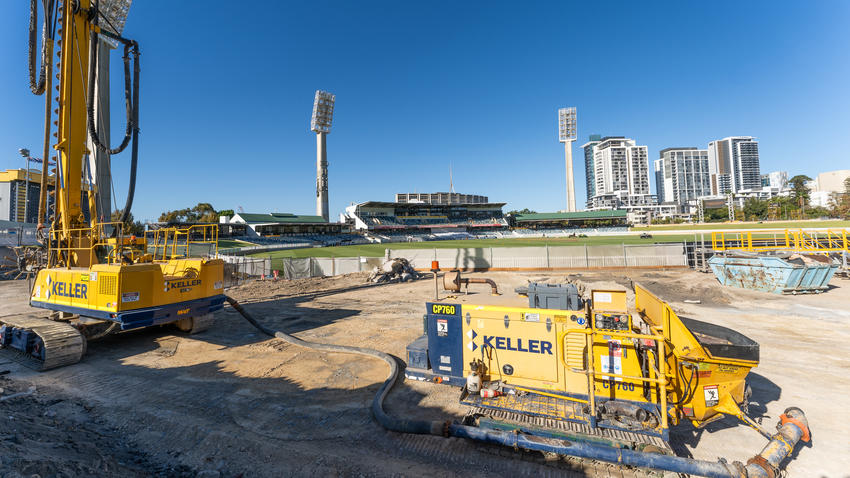Keller Australia has successfully designed and installed hundreds of piles at a historic cricket ground in Perth, laying the foundations for a bright future for the sport and local community.

Opened in 1890, the WACA Ground is one of cricket’s most iconic stadiums: the site of many famous national team victories and home to the male and female Western Australian cricket teams, and Perth Scorchers WBBL side.
Today, the ground is in the midst of a significant, A$163.4 million transformation that will feature a new public pavilion, along with facilities including a pitch-side swimming pool and water park, multipurpose event centre, all-abilities playground, fitness suites, museum and much more. The aim is for the stadium to be a more inclusive space for the wider Perth community.
As experts in large-scale foundation projects, Keller was proud to be chosen by main contractors ADCO as the geotechnical partner for this historic sporting venue.
An optimised design
Design and Estimating Manager Michael Wulff explains how Keller approached the job: “We explored a few different options for the design, initially considering precast pile. The WACA Ground is fairly close to the river, where you’d expect softer ground conditions, which would be more suitable for fast-paced precast piles.
“However, there was less soft material than first thought, so a more cost-effective option for the client was a CFA – continuous flight auger – scheme. We ran various assessments and value engineered the design to come up with the optimum sizes across the large site.”
Starting on site in January 2024, the Keller crew installed around 650 piles, the vast majority of which were 600mm in diameter, to several different depths, ranging from 11m to 28m. Around 140 of the piles were 450mm in diameter.
“Because of the wide variations in pile lengths, we had to use around 16 different sizes of steel cage to reinforce the piles,” says Chathura Peiris, Project Manager.
“Also, due to the pile layout, we had to plan our work sequence in a more advanced manner. This made the project a little more challenging, but it was something we were able to handle.”
Other challenges included working close to live underground HV power lines and coordinating works with other contractors.
On time, on budget
Despite losing a few days to extreme heat and a few other minor disruptions, the Keller team managed to ramp up production rates to around 250 linear metres a day in the final weeks. The crew demobbed on time on 22 April.
“We were very happy to complete the works safely, on schedule and to a very high standard,” Jody Parkin, Construction Manager says.
“On high-profile projects like these, all eyes are on you. The whole Keller team deserves a lot of credit for making it a success.”